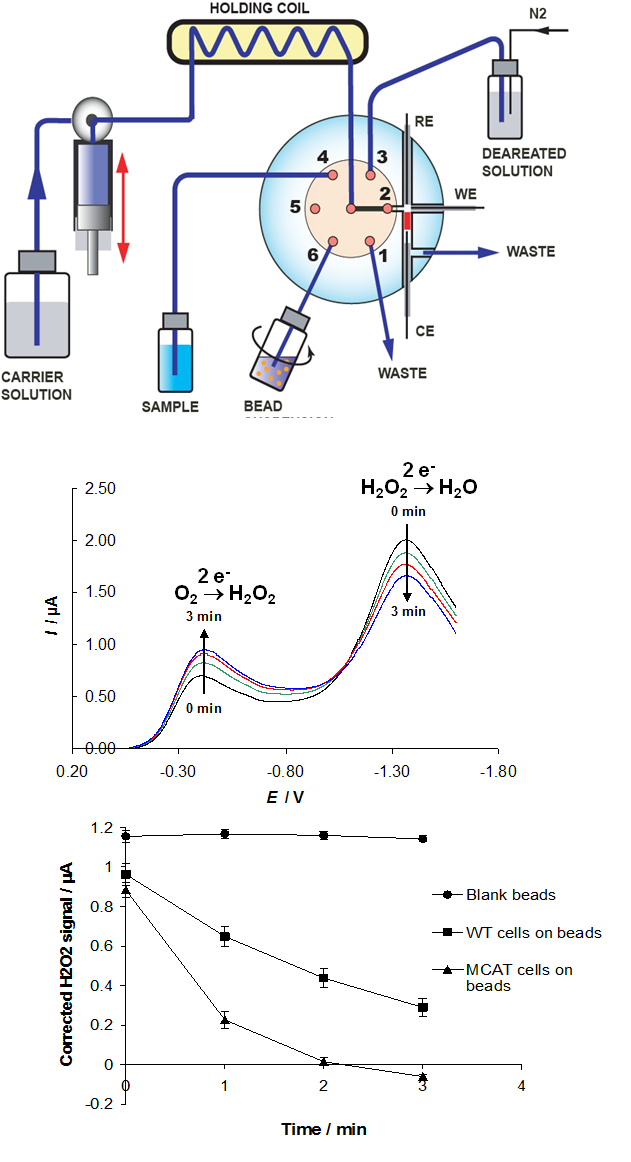Studies of Redox Processes in Cells
3.6.12.
Live cells produce H2O2 in response to cellular stress. H2O2 is harmful to cells and may play a role in cellular apoptosis and senescence. Catalase is an enzyme that breaks down H2O2, and has been suggested as a key component of the cellular defense mechanism against oxidative loads. In order to study the rate of H2O2 decomposition by live cells, a voltammetric setup was assembled in LOV.
By using mercury as the working electrode material, the detection of O2 and H2O2 was possible from a single voltammetric scan. Mouse embryonic fibroblast cells were grown on Cytodex beads and packed into the LOV flow cell, next to the working electrode (~10^4 cells / 5 µL bead column). The results revealed that catalase-overexpressing cells decomposed H2O2 more rapidly than wild type cells. (Lähdesmäki 2007).










